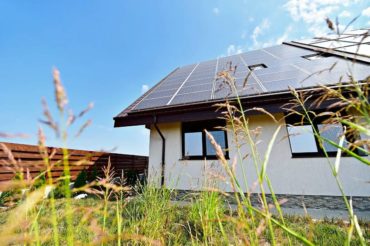 When remodeling or building, we often hear how prospective clients might want to incorporate “green” methods into their projects. They typically cite items like solar panels, low-VOC (volatile organic compounds) materials, ground-source heat, ICF foundations, on-demand water heaters and more. Many of these can be very pricey options, with very long payoffs.
When remodeling or building, we often hear how prospective clients might want to incorporate “green” methods into their projects. They typically cite items like solar panels, low-VOC (volatile organic compounds) materials, ground-source heat, ICF foundations, on-demand water heaters and more. Many of these can be very pricey options, with very long payoffs.
We have noticed that homeowners overlook a few simple things that most people might not think of as “green” yet can have lasting impacts on the environment.
Some very easy things you can do include upgrading existing windows, buying new Energy Star rated appliances and light fixtures, using higher-efficiency heating systems and water heaters, improving insulation and switching to water-saving fixtures.
There are also many specialty finishes, like quartz made with recycled products, bamboo and sustainable material products, LED lighting and much more. New products come out every day, so it can be hard to keep up with what’s available.
‘Green’ Choices You May Not Think About
Let’s look at some shades of green that are easily overlooked. On occasion, we tear down a “perfectly good” house for a variety of reasons. We also tear down some homes that really need tearing down.
While we encourage remodeling and reuse where possible, it doesn’t always work out. But remodeling and working within an existing home can also be green. It saves lots of materials that can’t be recycled from the landfill.
When you need to demolish a house or a section of one, salvage what you can for reuse or recycle at a Habitat for Humanity store or similar. Be sure to give them a call to see what they are currently accepting. Reusing and refinishing existing hardwoods can also save perfectly good materials from the dump — consider that option if you have to reuse what you have and add to it.
Another overlooked area is higher-quality material. Often, budget takes over when choosing finishes, and homeowners make choices based on cost rather than longevity.
For example, solid, site-finished hardwood has an incredible lifespan, even with refinishing a few times. You can change the color by adding stain when you refinish if that appeals to you, but you will get years more of wear than the inexpensive laminate, which will be torn out a few times over and left at the landfill. (Additionally, laminate is often made with items that have high VOCs, so read your labels.)
Higher-quality paints last and look better longer. Over time, even something as simple as a cast-iron sink will last longer and look better than a midgrade, stainless sink.
High-quality workmanship is another area that increases the longevity of products. Proper and detailed install of many items will make a difference in how well they last.
If building or remodeling is your future, think beyond the everyday “green” items — there are so many shades.






















Comments